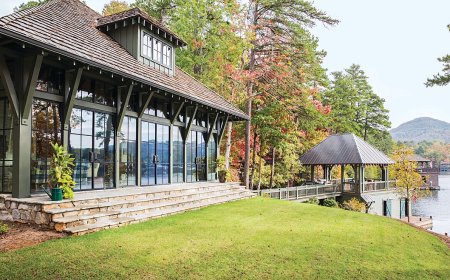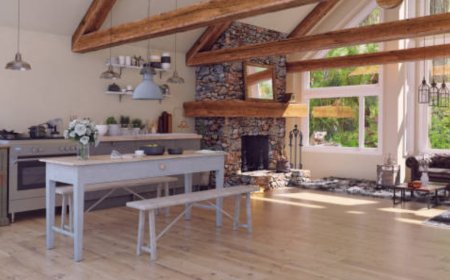How to Explore Frontignan Vineyard Walks
How to Explore Frontignan Vineyard Walks Frontignan, a quiet gem nestled along the Mediterranean coast in southern France, is renowned for its centuries-old viticulture and the sweet, aromatic Muscat wines that have earned it global acclaim. Yet beyond the cellars and tasting rooms lies a quieter, equally captivating experience: the vineyard walks that wind through sun-drenched rows of grapevines,
How to Explore Frontignan Vineyard Walks
Frontignan, a quiet gem nestled along the Mediterranean coast in southern France, is renowned for its centuries-old viticulture and the sweet, aromatic Muscat wines that have earned it global acclaim. Yet beyond the cellars and tasting rooms lies a quieter, equally captivating experience: the vineyard walks that wind through sun-drenched rows of grapevines, past ancient stone walls and olive groves, offering immersive encounters with the land, the labor, and the legacy of this historic wine region. Exploring Frontignan vineyard walks is not merely a scenic stroll—it’s a journey into the soul of Languedoc winemaking. Whether you’re a wine enthusiast, a nature lover, or a traveler seeking authentic cultural immersion, these walks provide a profound connection to the terroir that shapes one of France’s most distinctive wines.
The importance of exploring Frontignan vineyard walks extends beyond tourism. These paths preserve agricultural heritage, support sustainable land use, and foster community-led initiatives that keep traditional viticulture alive. Unlike mass-produced wine regions, Frontignan’s vineyards remain largely family-owned and cultivated using time-honored methods. Walking through them offers insight into the challenges and rewards of small-scale, organic viticulture in a changing climate. Moreover, these walks encourage slow travel—inviting visitors to pause, observe, and appreciate the rhythm of the seasons, the texture of the soil, and the quiet dignity of the vignerons who tend the vines.
This guide will walk you through everything you need to know to plan, navigate, and fully experience Frontignan’s vineyard trails. From practical logistics to cultural context, from seasonal considerations to ethical engagement, you’ll gain the knowledge to transform a simple walk into a meaningful, memorable exploration of one of France’s most underrated wine landscapes.
Step-by-Step Guide
1. Research and Plan Your Route
Frontignan is surrounded by a network of well-marked trails, many of which originate from the village center or nearby hamlets like Saint-Drézéry and Cournonterral. Before setting out, identify your preferred route based on duration, difficulty, and points of interest. The most popular walk begins at the Place de l’Église in Frontignan and follows the D14 road toward the vineyards to the north, eventually connecting to the Chemin des Vignes, a historic path used by winemakers for generations.
Use free digital tools like OpenStreetMap or Komoot to download offline maps. These platforms highlight public footpaths, private vineyard access points, and landmarks such as the Moulin de la Vigne, an old windmill now used as a cultural center. Look for trails labeled “Sentier Viticole” or “Promenade des Vignes”—these are officially maintained routes designed for pedestrian access.
Consider the time of year. Spring (April–May) offers blooming lavender and wildflowers between vine rows, while autumn (September–October) provides the most dramatic views as grapes ripen and are harvested. Summer walks require early morning or late afternoon timing to avoid midday heat, and winter paths may be damp or muddy after rain.
2. Obtain Necessary Permissions
Not all vineyards are open to the public. Many are privately owned, and while walking along public footpaths that border them is permitted under French law (right of way), entering vineyard plots without permission is trespassing. Before stepping off marked trails, check local signage. Many vineyards display small wooden plaques indicating whether visitors are welcome.
If you wish to enter a vineyard for a closer look or to photograph the vines up close, contact the winery in advance. A simple email or phone call (in French or English) asking, “Je souhaite faire une promenade dans vos vignes, est-ce possible ?” (I would like to walk through your vines—is this possible?) is often met with hospitality. Many small producers appreciate visitors who show genuine interest and may offer a brief tour or tasting.
3. Dress and Equip Appropriately
Frontignan’s terrain is varied: compacted earth paths, gravel roads, grassy embankments, and occasional steps carved into hillsides. Wear sturdy, closed-toe walking shoes with good grip—flip-flops or sandals are unsuitable. Even in warm weather, long, lightweight pants are recommended to protect against brambles, ticks, and sun exposure.
Carry a reusable water bottle, as temperatures can rise quickly under the Mediterranean sun. A wide-brimmed hat, sunglasses, and high-SPF sunscreen are essential. A small backpack should contain a lightweight rain jacket (weather changes fast), a compact first-aid kit, and a phone charger. Avoid carrying bulky items that could hinder movement on narrow paths.
4. Start Your Walk at the Right Time
Begin your walk between 7:00 a.m. and 9:00 a.m. during warmer months to enjoy cool air, soft morning light, and the chance to see vignerons beginning their daily work. You may witness pruning, trellising, or early harvest preparations—opportunities to observe traditional techniques rarely seen by tourists.
During harvest season, the vineyards come alive with activity. If you’re visiting in September or early October, consider timing your walk for early afternoon, when workers are taking a break. This is often when local producers offer impromptu tastings to walkers who show interest. A polite smile and a few words of appreciation can open doors.
5. Navigate the Vineyard Trails
Follow the marked trails carefully. In Frontignan, most paths are signposted with yellow or white arrows on stone posts or trees. The main route from the village center to the northern vineyards is approximately 4.5 kilometers round-trip and takes about 1.5 to 2 hours at a leisurely pace.
Key landmarks along the way include:
- Le Puits de la Vigne – A restored 18th-century well that once supplied water to vineyard workers.
- Les Murailles de la Côte – Stone retaining walls built to prevent erosion on the sloping vineyards.
- La Chapelle Sainte-Cécile – A small chapel nestled among vines, dating to the 12th century, used historically by vignerons for blessings before harvest.
Stay on designated paths to avoid damaging root systems or disturbing wildlife. Many vines are over 30 years old and require careful cultivation. Avoid stepping on vine bases or leaning on trellises.
6. Engage with the Landscape
As you walk, take time to observe. Notice how the vines are trained—Frontignan primarily uses the “guyot” method, where one or two canes are trained horizontally to maximize sun exposure. Look for the distinctive Muscat Blanc à Petits Grains grapes, small, golden-green clusters that shimmer in the sun.
Smell the air. In late summer, the scent of ripe Muscat fills the valleys—a heady mix of orange blossom, honey, and tropical fruit. Listen for the rustle of leaves in the Mistral wind, the distant clink of pruning shears, or the call of skylarks nesting in the vine rows.
Keep a journal or use your phone’s voice recorder to note observations: the color of the soil (often red clay with limestone), the presence of cover crops like clover or vetch (used for natural pest control), or the types of birds you see (swallows, kestrels, and hoopoes are common).
7. Respect Local Customs and Etiquette
Frontignan’s vineyard culture is deeply rooted in tradition. Never pick grapes, even if they appear ripe or fallen. This is not only illegal but also disrespectful to the grower’s livelihood. Avoid loud conversations or music—these are working landscapes, not theme parks.
If you encounter a vigneron, greet them with a simple “Bonjour” and ask permission before taking photos. Many are proud of their work and may invite you to taste a glass of wine, but never assume this is automatic. A small gesture of appreciation—a handwritten thank-you note, a local honey, or even a bottle of water left at their gate—goes a long way.
8. End Your Walk with Reflection and Local Connection
Conclude your walk at one of Frontignan’s family-run wineries that welcome walkers. Domaine de la Fontaine and Château de la Fontaine both offer informal tastings for visitors who arrive on foot. Ask to taste their Muscat de Frontignan—light, floral, with notes of apricot and citrus—and inquire about the history of their vines. Many have been in the same family for over 150 years.
Consider purchasing a bottle directly from the producer. Not only does this support sustainable agriculture, but you’ll often receive a more authentic product than what’s found in supermarkets. Some winemakers even include a small map of the vineyard walks with your purchase—a thoughtful keepsake.
Best Practices
1. Walk Responsibly: Leave No Trace
Frontignan’s vineyards are fragile ecosystems. Every piece of litter, every off-path footprint, and every crushed vine has a cumulative impact. Follow the Leave No Trace principles:
- Carry out all trash, including organic waste like fruit peels.
- Do not remove plants, stones, or vines—even fallen leaves or grapes belong to the land.
- Use designated rest areas; avoid sitting on vine rows or near irrigation systems.
Even biodegradable items can disrupt soil chemistry or attract pests. Plastic bottles, wrappers, and food containers are especially harmful to local wildlife, including bees and lizards that thrive in the vineyard margins.
2. Support Local, Not Corporate
While large wine brands dominate supermarket shelves, Frontignan’s true character lies in its small producers. Avoid chain retailers and instead seek out independent wine shops like La Cave du Vigneron in the village center or weekend markets in Place de la République. These vendors source directly from local growers and often carry limited-production wines unavailable elsewhere.
When you buy from a small estate, you’re not just purchasing wine—you’re investing in the preservation of heritage viticulture, biodiversity, and rural employment. Many of these producers use organic or biodynamic methods, avoid chemical herbicides, and rely on manual labor, making their wines not only tastier but more environmentally sustainable.
3. Choose Off-Peak Seasons for Deeper Experiences
Summer months bring crowds, especially from July to August. While the weather is ideal, the vineyard paths become congested with day-trippers. For a more serene, authentic experience, visit in late April, May, or early October. The temperatures are pleasant, the light is golden, and the vineyards are less crowded.
Winter (November–February) offers the most intimate encounters. With few tourists, you may find yourself alone among the vines, watching bare branches etch patterns against the sky. This is the season of pruning and rest—a time when the true rhythm of the land reveals itself. It’s also when many vignerons are more available for conversation, as their work is less frantic.
4. Learn Basic French Phrases
While English is spoken in tourist areas, most vineyard workers in Frontignan speak primarily French. Learning a few phrases enhances your experience and shows respect:
- Bonjour – Hello
- Merci beaucoup – Thank you very much
- C’est magnifique – It’s beautiful
- Est-ce que je peux photographier ? – May I take a photo?
- Quel est le nom de ce cépage ? – What is the name of this grape variety?
Even a simple “Merci” spoken with sincerity can lead to unexpected hospitality—a glass of wine, a shared story, or an invitation to return next year.
5. Document Your Journey Ethically
Photography is encouraged, but do so with awareness. Avoid staging photos that misrepresent vineyard conditions—such as pretending to harvest or posing among unripe vines. Be mindful of privacy: don’t photograph workers without consent, and avoid capturing private homes or gated entrances.
Use your images to educate, not just to impress. Share your photos with context: “This is a 40-year-old Muscat vine in Frontignan, pruned using the Guyot method. The soil here is red clay with limestone, ideal for aromatic whites.” This turns your walk into a contribution to cultural preservation.
6. Participate in Community Events
Frontignan hosts several annual events centered around its vineyards. The Fête des Vignes in early September features guided walks, live music, and tastings hosted by local producers. The Journée des Vignerons in May invites the public to join pruning demonstrations and soil workshops.
Volunteering is another meaningful way to engage. Some estates offer “Vigneron pour un Jour” programs, where visitors help with light tasks like tying vines or removing weeds. These are often free, require no experience, and provide unparalleled insight into the daily life of a vigneron.
7. Conserve Water and Energy
Even in a region known for its sun, water is a precious resource. Avoid using bottled water excessively. Carry a refillable bottle and fill it at public fountains, which are common in Frontignan’s village center.
If you stay overnight, choose accommodations that prioritize sustainability—such as guesthouses powered by solar energy or those that use rainwater harvesting. Many B&Bs in Frontignan are housed in restored stone farmhouses, blending modern comfort with ecological responsibility.
Tools and Resources
1. Digital Mapping and Navigation
For accurate trail navigation, download these free tools:
- OpenStreetMap – Offers detailed topographic layers and user-updated footpaths. Enable the “Hiking” layer for vineyard trails.
- Komoot – Curates user-generated walking routes. Search “Frontignan Vineyard Walk” for highly rated paths with photos and reviews.
- Google Earth – Use the historical imagery feature to see how vineyard layouts have changed over decades, revealing patterns of expansion and conservation.
2. Local Guides and Books
While many online resources are generic, these local publications offer authentic insight:
- “Les Vignes de Frontignan: Histoire et Terroir” by Michel Boudet – A comprehensive history of viticulture in the region, published by the Frontignan Historical Society.
- “Marcher dans les Vignes du Languedoc” by Élodie Lefebvre – A regional walking guide with 12 detailed itineraries, including three focused on Frontignan.
- “Muscat de Frontignan: Le Vin des Dieux” – A beautifully illustrated booklet available at the Office de Tourisme, detailing the wine’s production and cultural significance.
3. Visitor Centers and Information Points
Start your journey at the Office de Tourisme de Frontignan, located at 12 Rue de la République. Staff provide free maps, seasonal trail updates, and contact details for vineyard owners who welcome walkers. They also offer guided group walks on weekends during peak season.
At the entrance to the vineyards, near the Moulin de la Vigne, you’ll find a small interpretive kiosk with panels explaining the local flora, grape varieties, and historical farming techniques. QR codes link to audio recordings in French and English.
4. Mobile Apps for Wine Enthusiasts
Enhance your walk with these apps:
- Vivino – Scan wine labels at tasting stops to read reviews and learn about production methods.
- Wine Folly – Offers visual guides to grape varieties, helping you identify Muscat Blanc à Petits Grains in the field.
- SoilWeb – A USDA-developed app that provides soil composition data for your location. Use it to understand why Frontignan’s red clay-limestone mix is ideal for aromatic whites.
5. Seasonal Calendars and Local Events
Check these websites for up-to-date events:
- www.frontignan-tourisme.fr – Official tourism site with walking route maps and seasonal calendars.
- www.vin-languedoc.fr – Regional wine council site listing open vineyards and harvest dates.
- Facebook Group: “Vignerons de Frontignan” – A vibrant community of growers who post updates on vineyard access, tastings, and volunteer opportunities.
6. Educational Resources
To deepen your understanding before or after your walk:
- YouTube Channel: “Terroirs de France” – Features short documentaries on Frontignan’s winemaking traditions.
- Podcast: “The Vineyard Whisperer” – Episode 17: “Muscat and the Mediterranean” explores climate, culture, and craftsmanship in Frontignan.
- Online Course: “Sustainable Viticulture in Southern France” – Offered by the University of Montpellier, available for free on Coursera.
Real Examples
Example 1: Marie and the 80-Year-Old Vines
Marie, a retired teacher from Lyon, visited Frontignan in May 2023. She followed the official vineyard walk from Place de l’Église and paused at a vineyard marked only by a wooden sign: “Vignes de la Grand-Mère.” Curious, she knocked on the door. A woman in her 80s, Madame Dubois, opened it. Marie asked if she could walk among the vines. Madame Dubois smiled and said, “They’re my mother’s vines. She planted them in 1943.”
For the next hour, Madame Dubois walked Marie through the rows, explaining how her mother used horse-drawn plows, how the vines survived the war years, and how she still harvests by hand. She offered Marie a glass of wine made from those same vines—sweet, complex, with a hint of rose petal. Marie later wrote a blog post about the encounter, which was shared by the Frontignan tourism board. Today, the vineyard is listed on the official walking map as a “Heritage Stop.”
Example 2: The Student Group and the Soil Test
In October 2022, a group of 12 environmental science students from the University of Toulouse walked the Frontignan vineyard trail as part of a field study. They used SoilWeb to test the pH and mineral content of the soil at five points along the path. They discovered that vineyards near the stone walls had higher calcium levels, correlating with more concentrated grape flavors.
Their findings were shared with local growers, who were surprised to learn how their traditional practices—using stone walls for heat retention and moisture control—aligned with modern soil science. One vigneron invited them to return the next year to help plant cover crops. Their project was later published in a regional agricultural journal.
Example 3: James and the Harvest Day Surprise
James, a photographer from London, visited Frontignan in early September. He had planned a simple walk but arrived just as the harvest began. He watched as a family worked silently, hand-picking Muscat grapes into wooden crates. He asked if he could photograph them. The patriarch, Jean, nodded and said, “Take a picture of the hands, not the face.”
James did—and captured an image of weathered hands holding a cluster of golden grapes, sunlight catching the dew. He posted it on Instagram with the caption: “The hands that grow the wine you drink. Meet them.” The post went viral in wine circles. A month later, Jean received a letter from a wine importer in New York, asking to source his Muscat. James never asked for anything in return. He simply left a bottle of his favorite Scotch on Jean’s doorstep.
Example 4: The Eco-Tourism Initiative
In 2021, a coalition of five small vineyards in Frontignan launched “Walk & Taste,” a program where visitors pay a small fee (€5) to walk a curated trail and receive a tasting of three wines at different stops. The fee goes directly to the growers and funds a local youth apprenticeship program for vineyard maintenance.
Since its launch, over 1,200 visitors have participated. The program has reduced littering by 70% and increased awareness of organic viticulture among tourists. Local schools now include the vineyard walks in their curriculum, teaching children about biodiversity and sustainable agriculture.
FAQs
Can I walk through any vineyard in Frontignan?
You may walk along public footpaths that border vineyards, but you must not enter private plots without permission. Look for signs indicating public access or ask at the Office de Tourisme for approved routes. Always respect “Propriété Privée” signs.
Is it safe to walk alone in the vineyards?
Yes, Frontignan’s vineyard trails are very safe. The region has low crime rates, and the paths are well-traveled by locals. However, always inform someone of your route, carry a charged phone, and avoid walking at dusk during winter months when visibility decreases.
Are the vineyard walks suitable for children?
Absolutely. Many families enjoy the walks, especially in spring and autumn. Choose shorter routes (2–3 km) and bring snacks and water. Children often enjoy spotting birds, identifying grape clusters, and learning about the soil.
Do I need to book a guided tour?
No, guided tours are not required. The trails are clearly marked and self-guided. However, guided walks are available on weekends during peak season and offer deeper historical context. Booking in advance is recommended.
Can I bring my dog?
Yes, dogs are welcome on the public trails but must be kept on a leash at all times. Some vineyards may not allow dogs inside their tasting areas, even if they’re on a leash. Always ask before entering.
What’s the best time of year to visit for vineyard walks?
April–May and September–October offer the best conditions: mild temperatures, blooming or ripening vines, and fewer crowds. Avoid mid-July to August if you prefer solitude.
Are there restrooms along the vineyard paths?
There are no public restrooms directly on the trails, but facilities are available at the Office de Tourisme, the Moulin de la Vigne, and several cafés in the village center. Plan accordingly.
Can I buy wine directly from the vineyards during my walk?
Many producers sell wine from their homes or small kiosks. Look for signs saying “Vente Directe” or “Cave à la Porte.” Payment is usually cash or card, but always confirm before arriving.
What should I do if I see a vine that looks sick or damaged?
Do not touch or attempt to treat it. Take a photo and note the location. Report it to the Office de Tourisme or the local agricultural cooperative. They monitor vine health and may send a technician to assess the issue.
Is photography allowed?
Yes, for personal use. Commercial photography requires a permit from the town hall. Always ask before photographing people, especially workers.
Conclusion
Exploring Frontignan vineyard walks is more than a tourist activity—it is an act of cultural preservation, environmental awareness, and personal connection. In a world increasingly dominated by mass production and digital distraction, these paths offer a rare opportunity to slow down, to witness the quiet artistry of viticulture, and to understand the land that gives life to one of France’s most delicate wines.
Each step you take among the vines is a tribute to generations of vignerons who have tended these same rows with patience, skill, and reverence. You are not merely observing a landscape—you are walking through history, through scent, through soil, through silence.
As you plan your journey, remember: the true value of Frontignan’s vineyards lies not in the bottles they produce, but in the stories they hold, the hands that nurture them, and the respect they demand. Walk gently. Listen closely. Taste mindfully. And carry the spirit of this place with you—not as a souvenir, but as a reminder of what it means to live in harmony with the earth.
Whether you return next spring to see the new buds, or simply keep the memory alive in your next glass of Muscat, your walk in Frontignan becomes part of its enduring legacy.





































